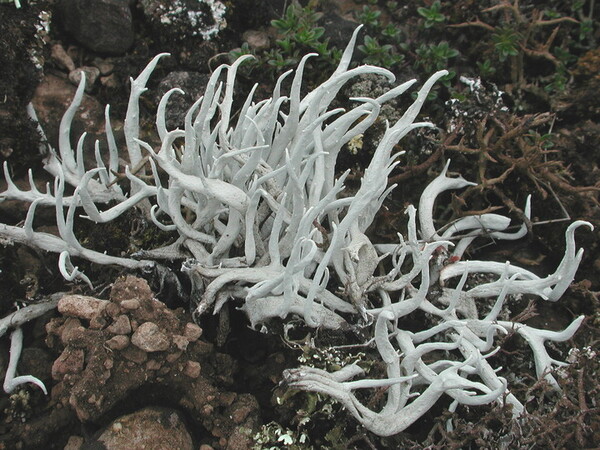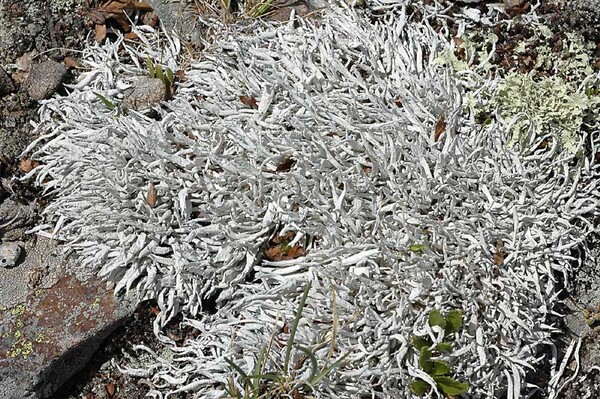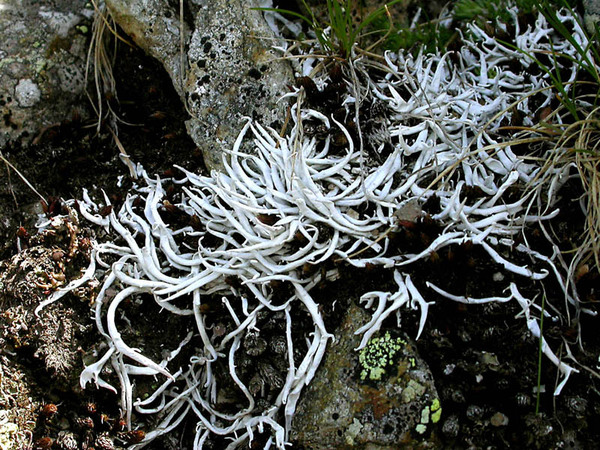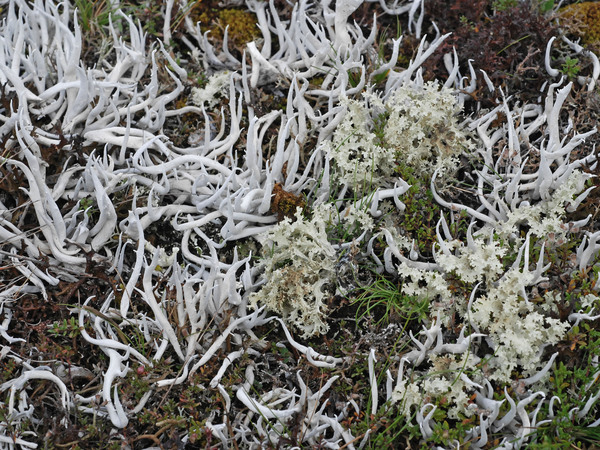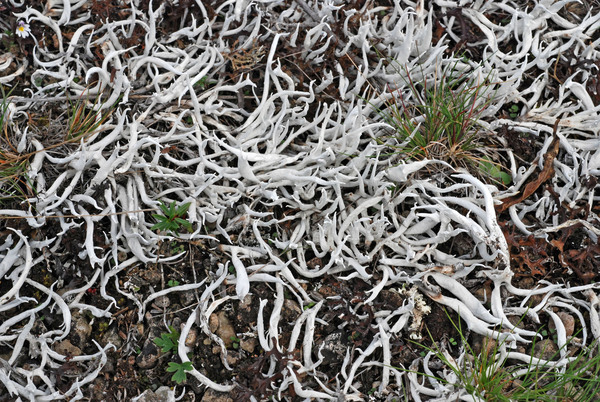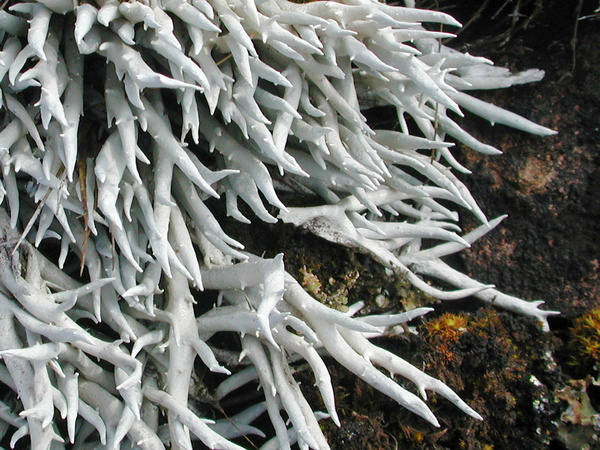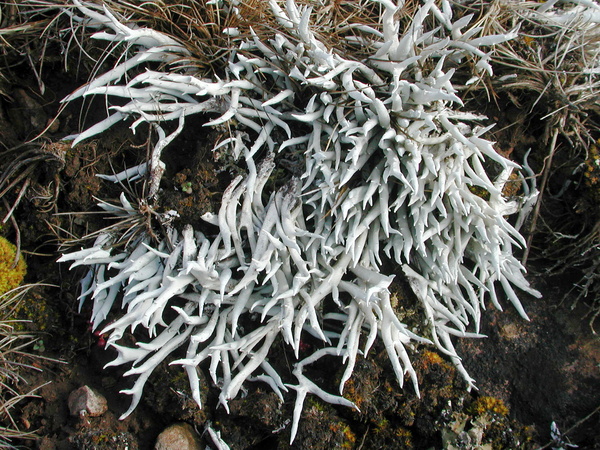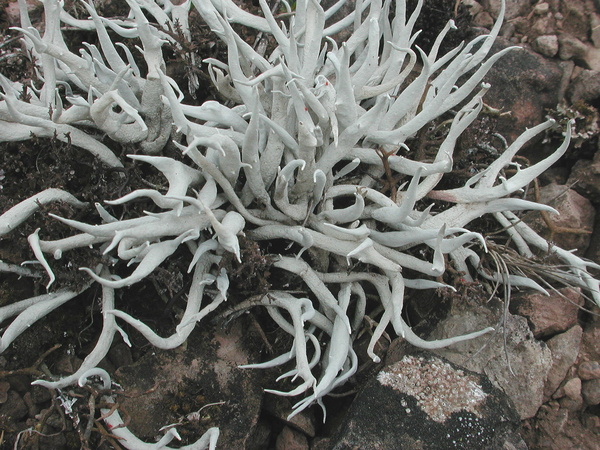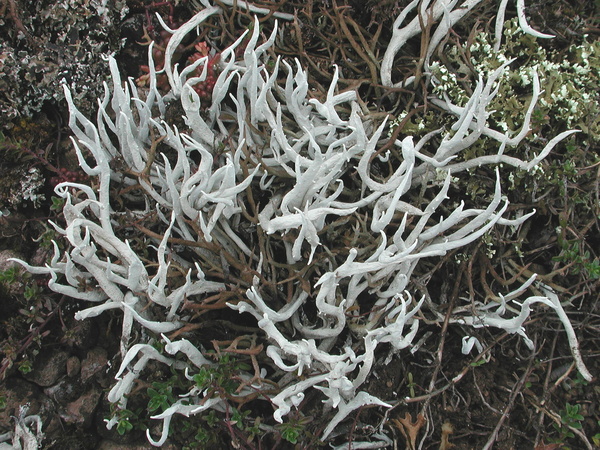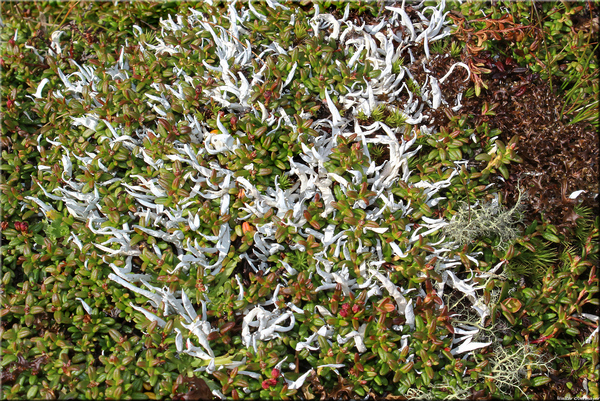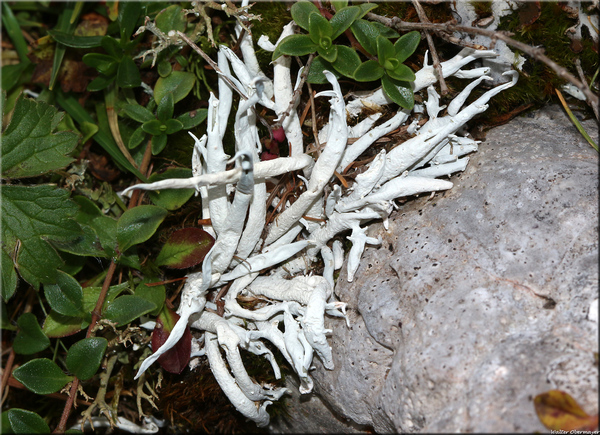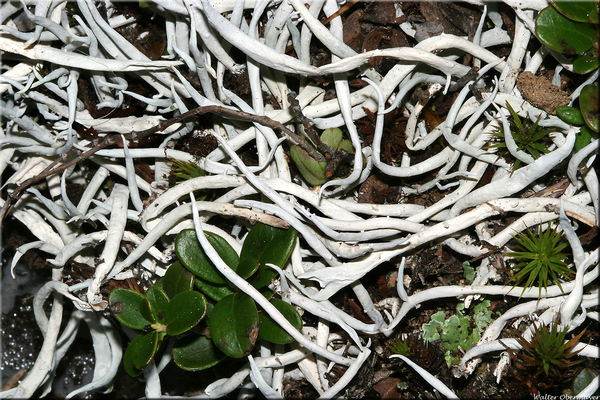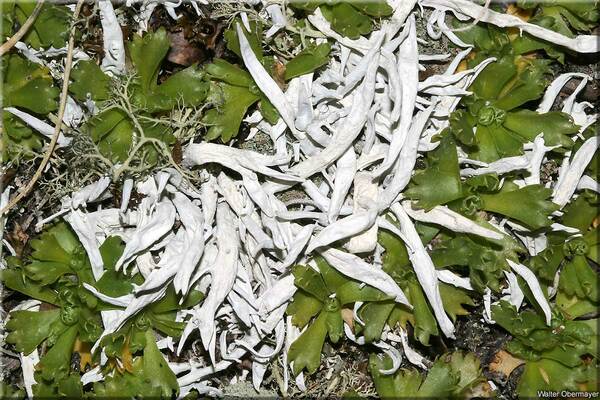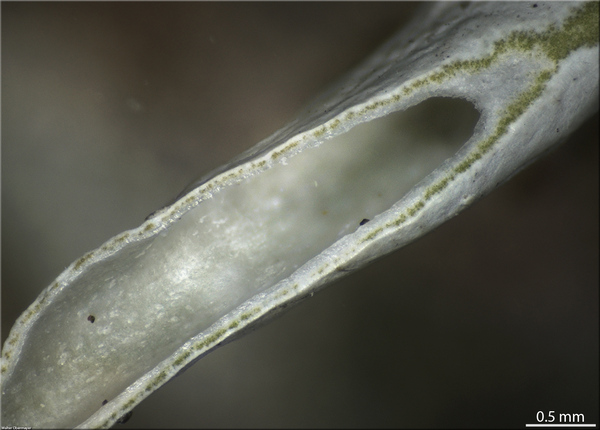Thamnolia vermicularis (Sw.) Schaerer subsp. vermicularis chem. thamnolic acid
Ach. ex Schaer., Enum. Crit. Lich. Eur.: 243, 1850. Basionym: Lichen vermicularis Sw. - Meth. Musc.: 37, 1781
Synonyms: Cenomyce vermicularis (Sw.) Röhl.; Cladonia vermicularis (Sw.) DC.; Thamnolia vermicularis (Sw.) Schaer. var. vermicularis; Thamnolia vermicularis (Sw.) Schaerer subsp. vermicularis chem. thamnolic acid ; Thamnolia vermicularis f. minor Lamy
Distribution: N - Frl (Tretiach & Hafellner 2000), Ven (Nascimbene & Caniglia 1997, 2003c, Caniglia & al. 1999, Giovagnoli & Tasinazzo 2014), TAA (Caniglia & al. 2002, Nascimbene & al. 2005, 2006, 2022, Nascimbene 2008b, Lang 2009, Bilovitz & al. 2014, 2014b), Lomb (Rivellini 1994, Dalle Vedove & al. 2004, Gheza 2019b), Piem (Isocrono & al. 2004, Hafellner & al. 2004, Morisi 2005, Isocrono & Piervittori 2008), VA (Borlandelli & al. 1996, Piervittori & Isocrono 1997, 1999, Valcuvia 2000, Piervittori & al. 2004, Favero-Longo & al. 2006, Isocrono & al. 2008), Lig.
Description: Thallus fruticose, pure white, becoming pinkish in the herbarium and staining the herbarium paper, erect or decumbent, often forming tufts. Thallus units 1-2(-3) mm thick (rarely to 8 mm), worm-like, usually to 5 (rarely to 10) cm tall, more or less cylindrical, with pointed apices, smooth, non squamulose, simple or rarely sparingly branched in upper part. Cortex of longitudinally arranged hyphae; medulla thin, soon becoming hollow. Apothecia not known. Pycnidia poorly evident, immersed, initially covered by cortical tissue, flask-shaped to broadly globose, the wall colourless throughout, uni- or rarely bilocular, densely filled with long, parallel conidiophores comprising erect chains of intercalary conidiogenous cells with bayonet-like processes near the upper cell septum. Conidia bacilliform, slightly tapering at one end, 3-5 x 1-2 µm. Photobiont chlorococcoid. Spot tests: K+ bright yellow, C-, KC-, P+ orange, UV . Chemistry: thamnolic acid.Note: an arctic-alpine, circum- and bipolar lichen found on wind-exposed Alpine tundras, both on calcareous and siliceous substrata, widespread throughout the Alps. Some Italian samples, especially from the Eastern Alps, should be analyzed molecularly, as they could prove to belong to the cryptic subsp. taurica. The old record from the mountains of Latium, as the recent one from Mt. Etna by Di Martino & Stancanelli (2015), which is not accepted here, need re-confirmation.
Growth form: Fruticose
Substrata: soil, terricolous mosses, and plant debris
Photobiont: green algae other than Trentepohlia
Reproductive strategy: mainly asexual, by thallus fragmentation
Commonnes-rarity: (info)
Alpine belt: extremely common
Subalpine belt: rare
Oromediterranean belt: absent
Montane belt: absent
Submediterranean belt: absent
Padanian area: absent
Humid submediterranean belt: absent
Humid mediterranean belt: absent
Dry mediterranean belt: absent
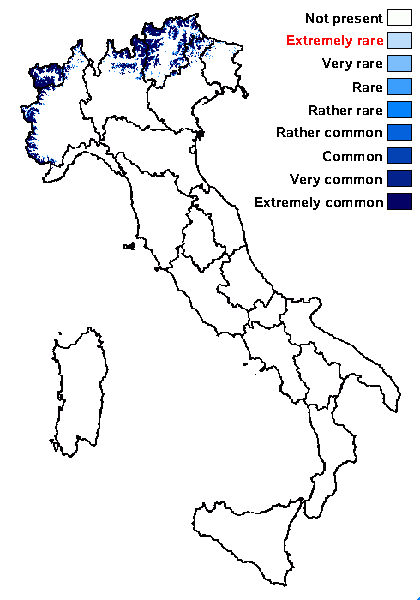
Predictive model
Herbarium samples


P.L. Nimis; Owner: Department of Life Sciences, University of Trieste
Herbarium: TSB (8716)
2001/12/11
old, pinkish herbarium specimen
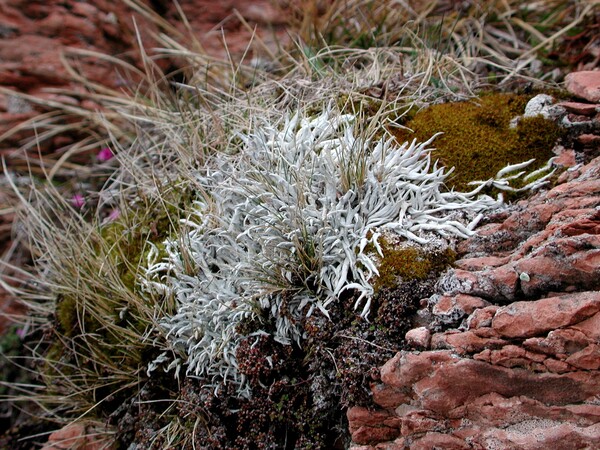

Juri Nascimbene - CC BY-SA 4.0; Owner: ITALIC - Dyades Project - Dept. of Life Sciences, University of Trieste
Italy, Trentino-Alto Adige, Trento, Monte Bondone
2014
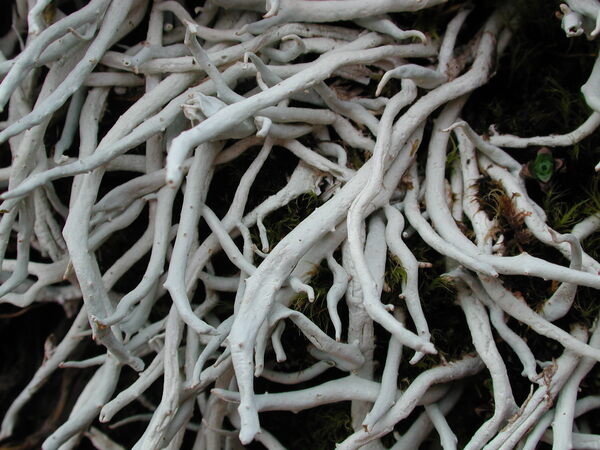

Juri Nascimbene - CC BY-SA 4.0; Owner: ITALIC - Dyades Project - Dept. of Life Sciences, University of Trieste
Italy, Trentino-Alto Adige, Trento, Monte Bondone
2014
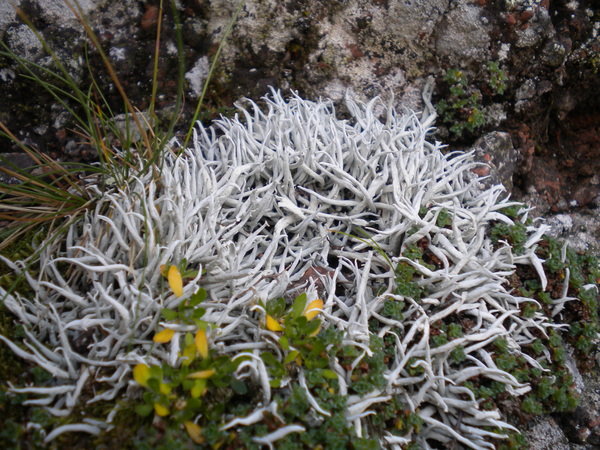

Juri Nascimbene – CC BY-SA 4.0; Owner: Department of ùLife Sciences, University of Trieste
Passo Manchen, Prov. Trento, Trentino-Alto Adige, Italy
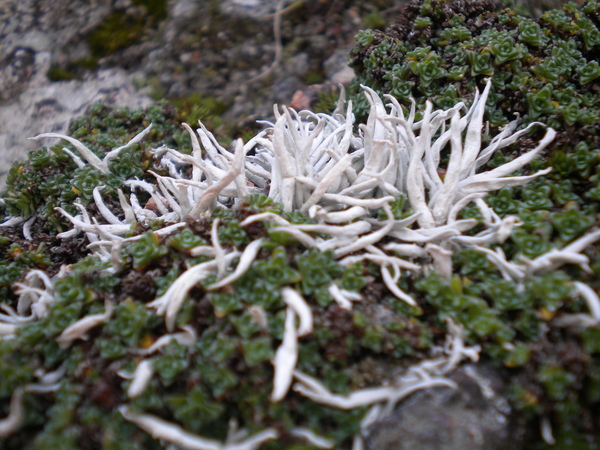

Juri Nascimbene – CC BY-SA 4.0; Owner: Department of ùLife Sciences, University of Trieste
Passo Manchen, Prov. Trento, Trentino-Alto Adige, Italy
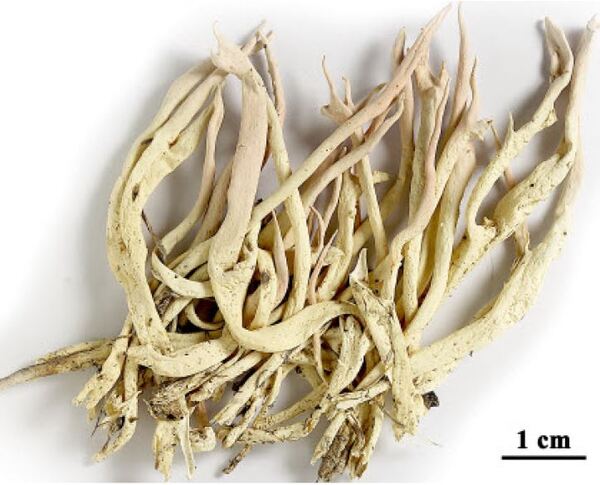

Felix Schumm - CC BY-SA 4.0
[19283], Australia, Victoria, Basalt Hill, Alpine National Park, Bogong High Plains, 20 km SE of Mt. Beauty, 36°53' S, 147°18' E, 1650 m, on soil and debris in exposed alpine grasslands with basalt outcrops and southerly aspect. Leg. J.A. Elix (40391) & H. Streimann 17.02.1994. Chemistry: thamnolic acid, decarboxythamnolic acid, by TLC, anal. J.A. Elix & S.A. Elix. LICH. AUSTRALASICI EXS. 298
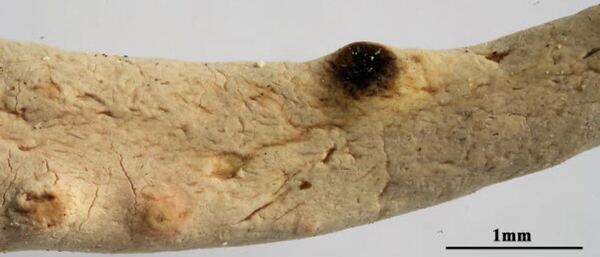

Felix Schumm - CC BY-SA 4.0
[19283], Australia, Victoria, Basalt Hill, Alpine National Park, Bogong High Plains, 20 km SE of Mt. Beauty, 36°53' S, 147°18' E, 1650 m, on soil and debris in exposed alpine grasslands with basalt outcrops and southerly aspect. Leg. J.A. Elix (40391) & H. Streimann 17.02.1994. Chemistry: thamnolic acid, decarboxythamnolic acid, by TLC, anal. J.A. Elix & S.A. Elix. LICH. AUSTRALASICI EXS. 298
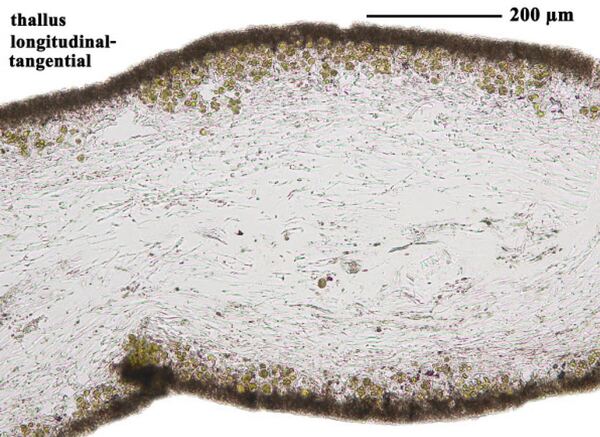

Felix Schumm - CC BY-SA 4.0
[19283], Australia, Victoria, Basalt Hill, Alpine National Park, Bogong High Plains, 20 km SE of Mt. Beauty, 36°53' S, 147°18' E, 1650 m, on soil and debris in exposed alpine grasslands with basalt outcrops and southerly aspect. Leg. J.A. Elix (40391) & H. Streimann 17.02.1994. Chemistry: thamnolic acid, decarboxythamnolic acid, by TLC, anal. J.A. Elix & S.A. Elix. LICH. AUSTRALASICI EXS. 298
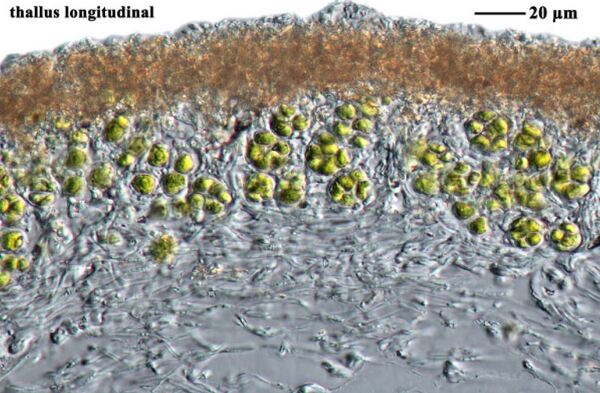

Felix Schumm - CC BY-SA 4.0
[19283], Australia, Victoria, Basalt Hill, Alpine National Park, Bogong High Plains, 20 km SE of Mt. Beauty, 36°53' S, 147°18' E, 1650 m, on soil and debris in exposed alpine grasslands with basalt outcrops and southerly aspect. Leg. J.A. Elix (40391) & H. Streimann 17.02.1994. Chemistry: thamnolic acid, decarboxythamnolic acid, by TLC, anal. J.A. Elix & S.A. Elix. LICH. AUSTRALASICI EXS. 298
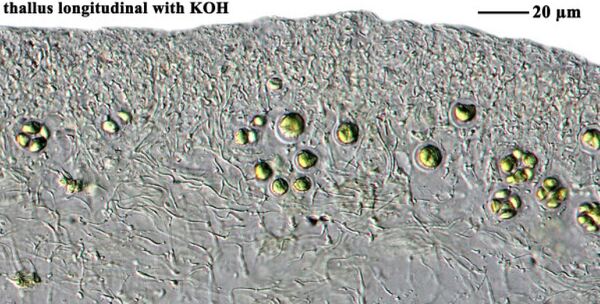

Felix Schumm - CC BY-SA 4.0
[19283], Australia, Victoria, Basalt Hill, Alpine National Park, Bogong High Plains, 20 km SE of Mt. Beauty, 36°53' S, 147°18' E, 1650 m, on soil and debris in exposed alpine grasslands with basalt outcrops and southerly aspect. Leg. J.A. Elix (40391) & H. Streimann 17.02.1994. Chemistry: thamnolic acid, decarboxythamnolic acid, by TLC, anal. J.A. Elix & S.A. Elix. LICH. AUSTRALASICI EXS. 298
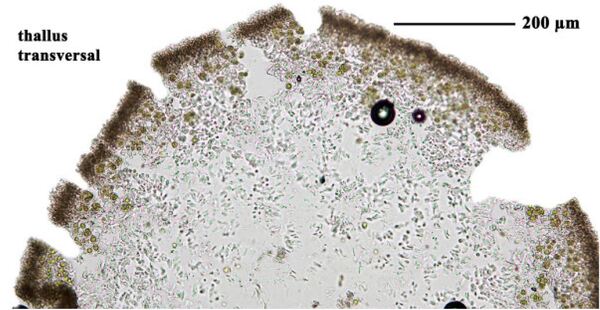

Felix Schumm - CC BY-SA 4.0
[19283], Australia, Victoria, Basalt Hill, Alpine National Park, Bogong High Plains, 20 km SE of Mt. Beauty, 36°53' S, 147°18' E, 1650 m, on soil and debris in exposed alpine grasslands with basalt outcrops and southerly aspect. Leg. J.A. Elix (40391) & H. Streimann 17.02.1994. Chemistry: thamnolic acid, decarboxythamnolic acid, by TLC, anal. J.A. Elix & S.A. Elix. LICH. AUSTRALASICI EXS. 298
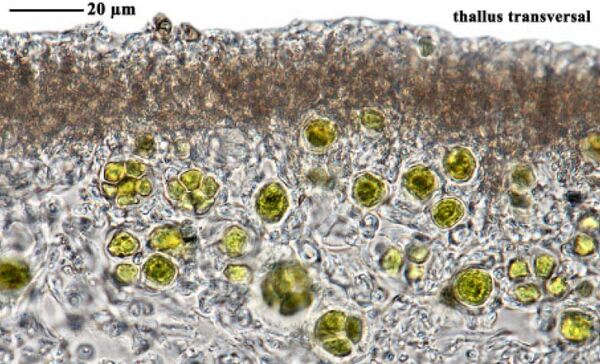

Felix Schumm - CC BY-SA 4.0
[19283], Australia, Victoria, Basalt Hill, Alpine National Park, Bogong High Plains, 20 km SE of Mt. Beauty, 36°53' S, 147°18' E, 1650 m, on soil and debris in exposed alpine grasslands with basalt outcrops and southerly aspect. Leg. J.A. Elix (40391) & H. Streimann 17.02.1994. Chemistry: thamnolic acid, decarboxythamnolic acid, by TLC, anal. J.A. Elix & S.A. Elix. LICH. AUSTRALASICI EXS. 298
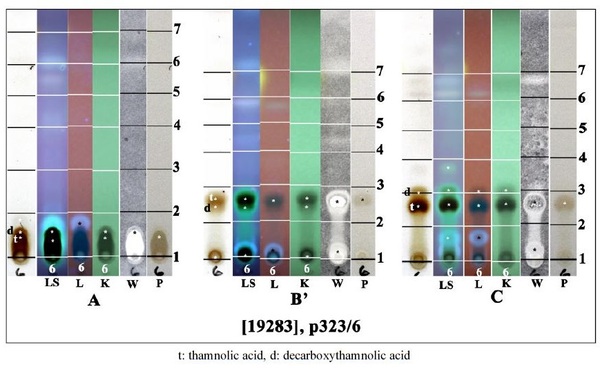

Felix Schumm - CC BY-SA 4.0
[19283], Australia, Victoria, Basalt Hill, Alpine National Park, Bogong High Plains, 20 km SE of Mt. Beauty, 36°53' S, 147°18' E, 1650 m, on soil and debris in exposed alpine grasslands with basalt outcrops and southerly aspect. Leg. J.A. Elix (40391) & H. Streimann 17.02.1994. Chemistry: thamnolic acid, decarboxythamnolic acid, by TLC, anal. J.A. Elix & S.A. Elix. LICH. AUSTRALASICI EXS. 298


Felix Schumm - CC BY-SA 4.0
[19284], Australia, Australian Capital Territory, Brindabella Range, summit of Mt. Aggie, 43 km WSW of Canberra, 35°28' S, 148°46' E, 1485 m, on debris and soil in subalpine heath on exposed summit. Leg. J.A. Elix (22852), 22.11.1989. Chemistry: thamnolic acid (major), decarboxythamnolic acid (minor) by TLC, anal. J.A. Elix. LICH. AUSTRALASICI EXS. 224..
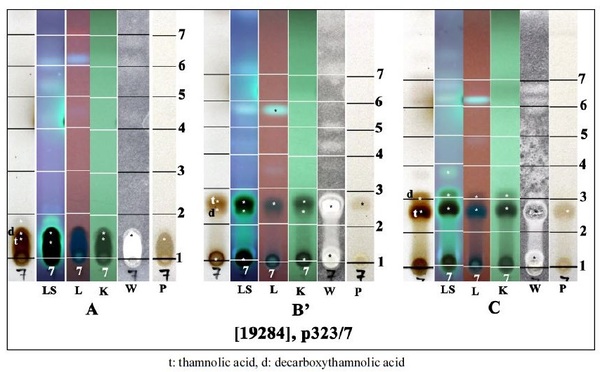

Felix Schumm - CC BY-SA 4.0
[19284], Australia, Australian Capital Territory, Brindabella Range, summit of Mt. Aggie, 43 km WSW of Canberra, 35°28' S, 148°46' E, 1485 m, on debris and soil in subalpine heath on exposed summit. Leg. J.A. Elix (22852), 22.11.1989. Chemistry: thamnolic acid (major), decarboxythamnolic acid (minor) by TLC, anal. J.A. Elix. LICH. AUSTRALASICI EXS. 224..
Growth form: Fruticose
Substrata: soil, terricolous mosses, and plant debris
Photobiont: green algae other than Trentepohlia
Reproductive strategy: mainly asexual, by thallus fragmentation
Commonnes-rarity: (info)
Alpine belt: extremely common
Subalpine belt: rare
Oromediterranean belt: absent
Montane belt: absent
Submediterranean belt: absent
Padanian area: absent
Humid submediterranean belt: absent
Humid mediterranean belt: absent
Dry mediterranean belt: absent

Predictive model
| Herbarium samples |


P.L. Nimis; Owner: Department of Life Sciences, University of Trieste
Herbarium: TSB (8716)
2001/12/11
old, pinkish herbarium specimen


Juri Nascimbene - CC BY-SA 4.0; Owner: ITALIC - Dyades Project - Dept. of Life Sciences, University of Trieste
Italy, Trentino-Alto Adige, Trento, Monte Bondone
2014


Juri Nascimbene - CC BY-SA 4.0; Owner: ITALIC - Dyades Project - Dept. of Life Sciences, University of Trieste
Italy, Trentino-Alto Adige, Trento, Monte Bondone
2014


Juri Nascimbene – CC BY-SA 4.0; Owner: Department of ùLife Sciences, University of Trieste
Passo Manchen, Prov. Trento, Trentino-Alto Adige, Italy


Juri Nascimbene – CC BY-SA 4.0; Owner: Department of ùLife Sciences, University of Trieste
Passo Manchen, Prov. Trento, Trentino-Alto Adige, Italy


Felix Schumm - CC BY-SA 4.0
[19283], Australia, Victoria, Basalt Hill, Alpine National Park, Bogong High Plains, 20 km SE of Mt. Beauty, 36°53' S, 147°18' E, 1650 m, on soil and debris in exposed alpine grasslands with basalt outcrops and southerly aspect. Leg. J.A. Elix (40391) & H. Streimann 17.02.1994. Chemistry: thamnolic acid, decarboxythamnolic acid, by TLC, anal. J.A. Elix & S.A. Elix. LICH. AUSTRALASICI EXS. 298


Felix Schumm - CC BY-SA 4.0
[19283], Australia, Victoria, Basalt Hill, Alpine National Park, Bogong High Plains, 20 km SE of Mt. Beauty, 36°53' S, 147°18' E, 1650 m, on soil and debris in exposed alpine grasslands with basalt outcrops and southerly aspect. Leg. J.A. Elix (40391) & H. Streimann 17.02.1994. Chemistry: thamnolic acid, decarboxythamnolic acid, by TLC, anal. J.A. Elix & S.A. Elix. LICH. AUSTRALASICI EXS. 298


Felix Schumm - CC BY-SA 4.0
[19283], Australia, Victoria, Basalt Hill, Alpine National Park, Bogong High Plains, 20 km SE of Mt. Beauty, 36°53' S, 147°18' E, 1650 m, on soil and debris in exposed alpine grasslands with basalt outcrops and southerly aspect. Leg. J.A. Elix (40391) & H. Streimann 17.02.1994. Chemistry: thamnolic acid, decarboxythamnolic acid, by TLC, anal. J.A. Elix & S.A. Elix. LICH. AUSTRALASICI EXS. 298


Felix Schumm - CC BY-SA 4.0
[19283], Australia, Victoria, Basalt Hill, Alpine National Park, Bogong High Plains, 20 km SE of Mt. Beauty, 36°53' S, 147°18' E, 1650 m, on soil and debris in exposed alpine grasslands with basalt outcrops and southerly aspect. Leg. J.A. Elix (40391) & H. Streimann 17.02.1994. Chemistry: thamnolic acid, decarboxythamnolic acid, by TLC, anal. J.A. Elix & S.A. Elix. LICH. AUSTRALASICI EXS. 298


Felix Schumm - CC BY-SA 4.0
[19283], Australia, Victoria, Basalt Hill, Alpine National Park, Bogong High Plains, 20 km SE of Mt. Beauty, 36°53' S, 147°18' E, 1650 m, on soil and debris in exposed alpine grasslands with basalt outcrops and southerly aspect. Leg. J.A. Elix (40391) & H. Streimann 17.02.1994. Chemistry: thamnolic acid, decarboxythamnolic acid, by TLC, anal. J.A. Elix & S.A. Elix. LICH. AUSTRALASICI EXS. 298


Felix Schumm - CC BY-SA 4.0
[19283], Australia, Victoria, Basalt Hill, Alpine National Park, Bogong High Plains, 20 km SE of Mt. Beauty, 36°53' S, 147°18' E, 1650 m, on soil and debris in exposed alpine grasslands with basalt outcrops and southerly aspect. Leg. J.A. Elix (40391) & H. Streimann 17.02.1994. Chemistry: thamnolic acid, decarboxythamnolic acid, by TLC, anal. J.A. Elix & S.A. Elix. LICH. AUSTRALASICI EXS. 298


Felix Schumm - CC BY-SA 4.0
[19283], Australia, Victoria, Basalt Hill, Alpine National Park, Bogong High Plains, 20 km SE of Mt. Beauty, 36°53' S, 147°18' E, 1650 m, on soil and debris in exposed alpine grasslands with basalt outcrops and southerly aspect. Leg. J.A. Elix (40391) & H. Streimann 17.02.1994. Chemistry: thamnolic acid, decarboxythamnolic acid, by TLC, anal. J.A. Elix & S.A. Elix. LICH. AUSTRALASICI EXS. 298


Felix Schumm - CC BY-SA 4.0
[19283], Australia, Victoria, Basalt Hill, Alpine National Park, Bogong High Plains, 20 km SE of Mt. Beauty, 36°53' S, 147°18' E, 1650 m, on soil and debris in exposed alpine grasslands with basalt outcrops and southerly aspect. Leg. J.A. Elix (40391) & H. Streimann 17.02.1994. Chemistry: thamnolic acid, decarboxythamnolic acid, by TLC, anal. J.A. Elix & S.A. Elix. LICH. AUSTRALASICI EXS. 298


Felix Schumm - CC BY-SA 4.0
[19284], Australia, Australian Capital Territory, Brindabella Range, summit of Mt. Aggie, 43 km WSW of Canberra, 35°28' S, 148°46' E, 1485 m, on debris and soil in subalpine heath on exposed summit. Leg. J.A. Elix (22852), 22.11.1989. Chemistry: thamnolic acid (major), decarboxythamnolic acid (minor) by TLC, anal. J.A. Elix. LICH. AUSTRALASICI EXS. 224..


 DOLICHENS
DOLICHENS
